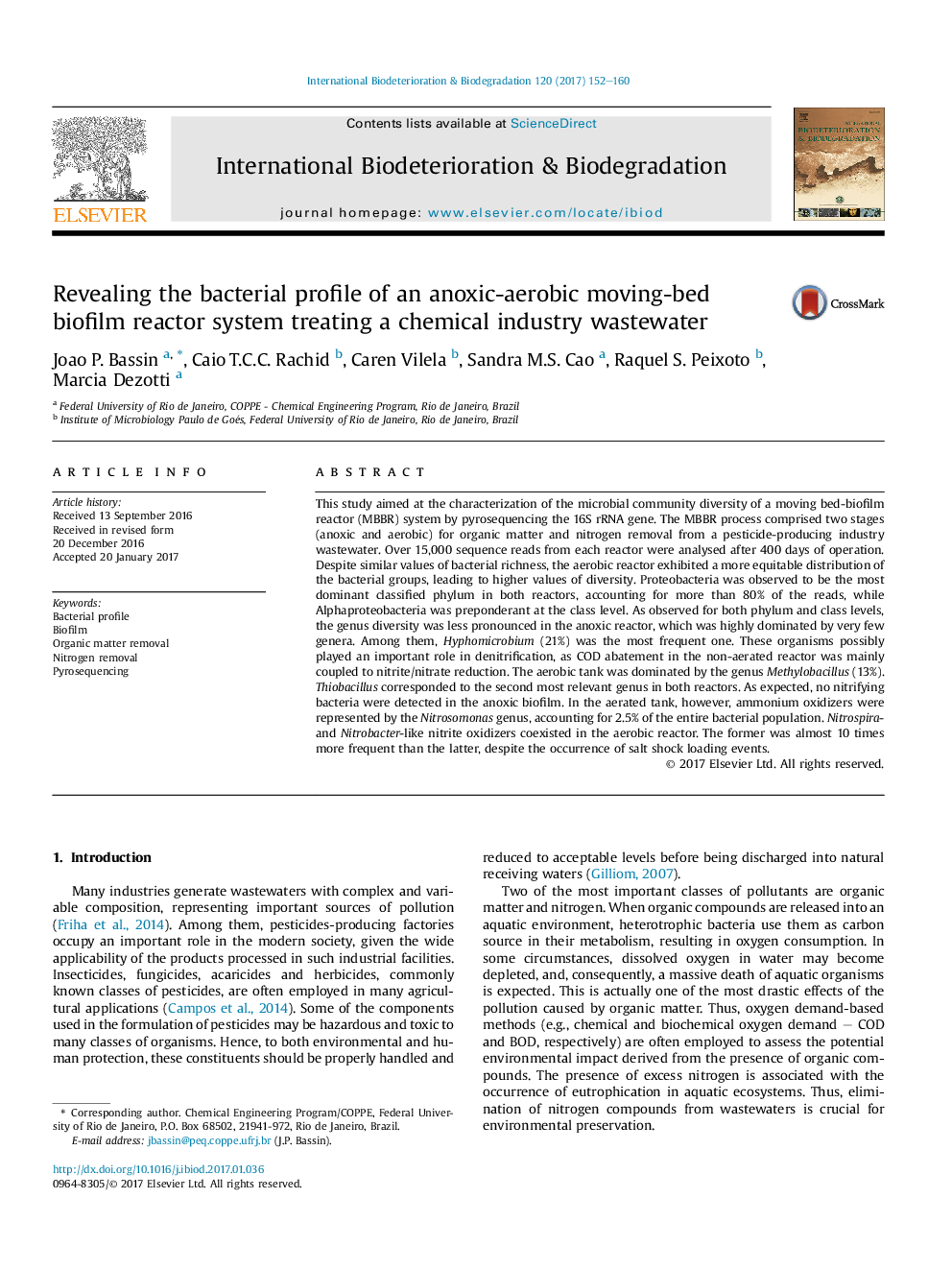| کد مقاله | کد نشریه | سال انتشار | مقاله انگلیسی | نسخه تمام متن |
|---|---|---|---|---|
| 5740395 | 1616297 | 2017 | 9 صفحه PDF | دانلود رایگان |
عنوان انگلیسی مقاله ISI
Revealing the bacterial profile of an anoxic-aerobic moving-bed biofilm reactor system treating a chemical industry wastewater
ترجمه فارسی عنوان
تشخیص پرونده باکتریایی یک سیستم راکتور بیوفیلم زاویه ای هوای بی هوازی با استفاده از یک ماده شیمیایی برای درمان پسماندهای صنایع شیمیایی
دانلود مقاله + سفارش ترجمه
دانلود مقاله ISI انگلیسی
رایگان برای ایرانیان
کلمات کلیدی
موضوعات مرتبط
علوم زیستی و بیوفناوری
علوم محیط زیست
علوم زیست محیطی (عمومی)
چکیده انگلیسی
This study aimed at the characterization of the microbial community diversity of a moving bed-biofilm reactor (MBBR) system by pyrosequencing the 16S rRNA gene. The MBBR process comprised two stages (anoxic and aerobic) for organic matter and nitrogen removal from a pesticide-producing industry wastewater. Over 15,000 sequence reads from each reactor were analysed after 400 days of operation. Despite similar values of bacterial richness, the aerobic reactor exhibited a more equitable distribution of the bacterial groups, leading to higher values of diversity. Proteobacteria was observed to be the most dominant classified phylum in both reactors, accounting for more than 80% of the reads, while Alphaproteobacteria was preponderant at the class level. As observed for both phylum and class levels, the genus diversity was less pronounced in the anoxic reactor, which was highly dominated by very few genera. Among them, Hyphomicrobium (21%) was the most frequent one. These organisms possibly played an important role in denitrification, as COD abatement in the non-aerated reactor was mainly coupled to nitrite/nitrate reduction. The aerobic tank was dominated by the genus Methylobacillus (13%). Thiobacillus corresponded to the second most relevant genus in both reactors. As expected, no nitrifying bacteria were detected in the anoxic biofilm. In the aerated tank, however, ammonium oxidizers were represented by the Nitrosomonas genus, accounting for 2.5% of the entire bacterial population. Nitrospira- and Nitrobacter-like nitrite oxidizers coexisted in the aerobic reactor. The former was almost 10 times more frequent than the latter, despite the occurrence of salt shock loading events.
ناشر
Database: Elsevier - ScienceDirect (ساینس دایرکت)
Journal: International Biodeterioration & Biodegradation - Volume 120, May 2017, Pages 152-160
Journal: International Biodeterioration & Biodegradation - Volume 120, May 2017, Pages 152-160
نویسندگان
Joao P. Bassin, Caio T.C.C. Rachid, Caren Vilela, Sandra M.S. Cao, Raquel S. Peixoto, Marcia Dezotti,
